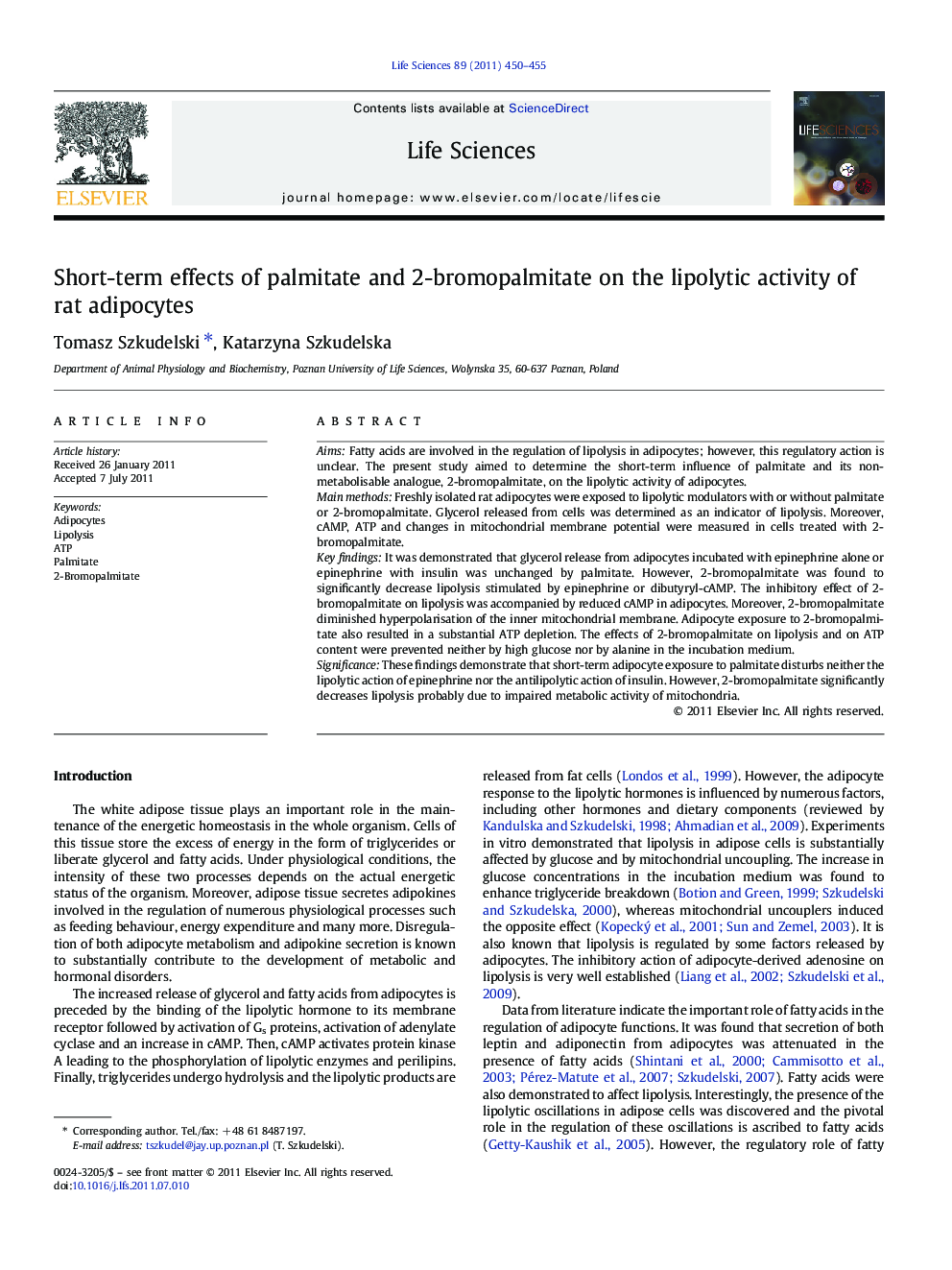| Article ID | Journal | Published Year | Pages | File Type |
|---|---|---|---|---|
| 2551778 | Life Sciences | 2011 | 6 Pages |
AimsFatty acids are involved in the regulation of lipolysis in adipocytes; however, this regulatory action is unclear. The present study aimed to determine the short-term influence of palmitate and its non-metabolisable analogue, 2-bromopalmitate, on the lipolytic activity of adipocytes.Main methodsFreshly isolated rat adipocytes were exposed to lipolytic modulators with or without palmitate or 2-bromopalmitate. Glycerol released from cells was determined as an indicator of lipolysis. Moreover, cAMP, ATP and changes in mitochondrial membrane potential were measured in cells treated with 2-bromopalmitate.Key findingsIt was demonstrated that glycerol release from adipocytes incubated with epinephrine alone or epinephrine with insulin was unchanged by palmitate. However, 2-bromopalmitate was found to significantly decrease lipolysis stimulated by epinephrine or dibutyryl-cAMP. The inhibitory effect of 2-bromopalmitate on lipolysis was accompanied by reduced cAMP in adipocytes. Moreover, 2-bromopalmitate diminished hyperpolarisation of the inner mitochondrial membrane. Adipocyte exposure to 2-bromopalmitate also resulted in a substantial ATP depletion. The effects of 2-bromopalmitate on lipolysis and on ATP content were prevented neither by high glucose nor by alanine in the incubation medium.SignificanceThese findings demonstrate that short-term adipocyte exposure to palmitate disturbs neither the lipolytic action of epinephrine nor the antilipolytic action of insulin. However, 2-bromopalmitate significantly decreases lipolysis probably due to impaired metabolic activity of mitochondria.
